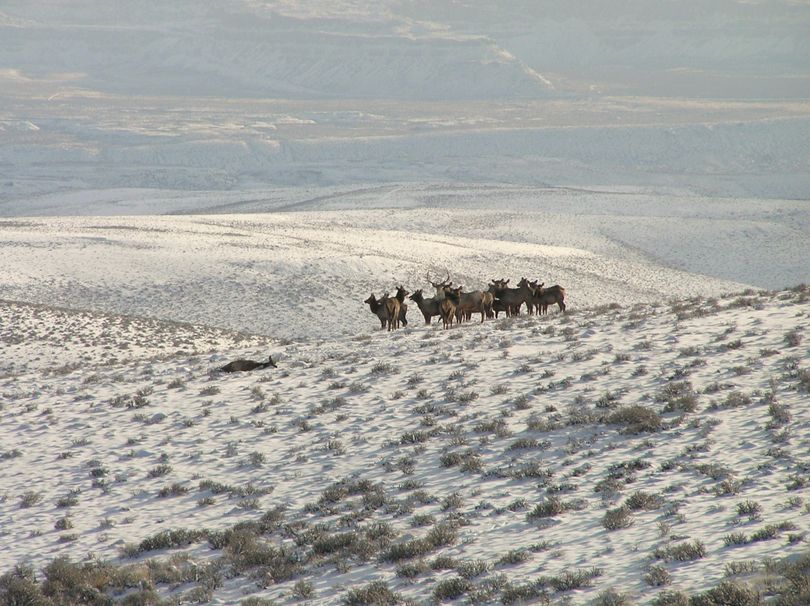I-90 collisions taking heavy toll on Colockum elk

WILDLIFE -- At least 65 elk have been killed this winter on a stretch of Interstate 90 just west of Vantage.
It’s by far the worst year in memory for elk collisions in the area, the Yakima Herald reports.
And while crash rates have fallen in recent weeks, the risk is not over, said Steven Wetzel, wildlife conflict specialist for the state Department of Fish and Wildlife.
The 500 or so elk from the Colockum herd that crossed the highway going south in search of food in late December and early January appear to be returning north toward the Whiskey Dick Wildlife Area as the snow melts, he said.
“The elk go down there every year and there’s always some hit. It’s just kind of a crossing point, but for some reason this year they were hanging out in the danger zone and we had an exceptionally high number of collisions,” Wetzel said. “We’re hoping the next few weeks they’ll move north without incident.”
Here's more from the Herald report:
No serious injuries to humans have been reported in any of the accidents involving elk, State Patrol Trooper Darren Wright said.
Wetzel said it’s not entirely clear why the elk decided to loiter along the highway for weeks, instead of crossing more quickly like they normally do. But he said the low-elevation snow that froze solid in early January definitely contributed because it made it hard for them to reach the grass underneath, so they turned to munching on the willows and other taller vegetation in the highway median.
“Elk will do whatever they want to do, and it’s all based on food,” Wetzel said. “Our worst year before was like 12 elk.”
Because the risk to public safety was so high, in mid-January the wildlife department and transportation officials set up an 8-mile-long fence to block elk from entering the roadway, Wetzel said.
Volunteers with the wildlife department’s master hunters program did much of the work, he added.
This week, they are taking the fence down to allow the elk to move back north.
“Now they are coming back because it’s melting and they want to go home,” he said. “The fence seemed to help and we’ll probably try it again next year.”
But Wetzel said drivers should continue to be on the lookout for elk in the area, especially at night when collisions are more likely to occur.
